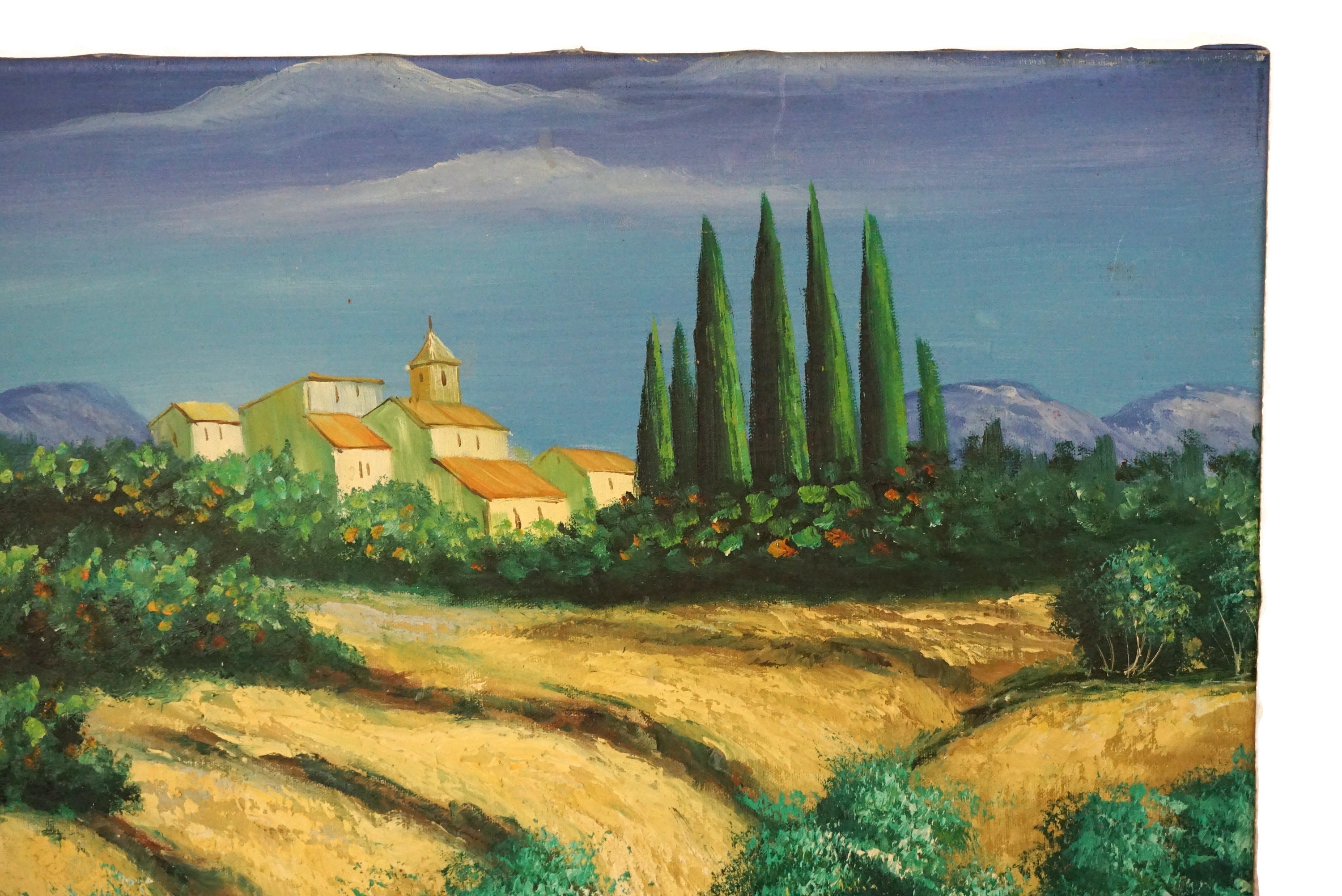

#LANDSCAPE PAINTINGS PATCH#
However the cognate term landscaef or landskipe for a cleared patch of land had existed in Old English, though it is not recorded from Middle English. Within a few decades it was used to describe vistas in poetry, and eventually as a term for real views. The word "landscape" entered the modern English language as landskip (variously spelt), an anglicization of the Dutch landschap, around the start of the 17th century, purely as a term for works of art, with its first use as a word for a painting in 1598.
#LANDSCAPE PAINTINGS PROFESSIONAL#
Such views, extremely common as prints in the West, are often seen as inferior to fine art landscapes, although the distinction is not always meaningful similar prejudices existed in Chinese art, where literati painting usually depicted imaginary views, while professional artists painted real views. If the primary purpose of a picture is to depict an actual, specific place, especially including buildings prominently, it is called a topographical view. Landscape views in art may be entirely imaginary, or copied from reality with varying degrees of accuracy. The recognition of a spiritual element in landscape art is present from its beginnings in East Asian art, drawing on Daoism and other philosophical traditions, but in the West only becomes explicit with Romanticism. Two main traditions spring from Western painting and Chinese art, going back well over a thousand years in both cases.

Detailed landscapes as a distinct subject are not found in all artistic traditions, and develop when there is already a sophisticated tradition of representing other subjects. Sky is almost always included in the view, and weather is often an element of the composition. In other works, landscape backgrounds for figures can still form an important part of the work. Landscape painting, also known as landscape art, is the depiction of natural scenery such as mountains, valleys, trees, rivers, and forests, especially where the main subject is a wide view-with its elements arranged into a coherent composition. The Hudson River School, a group of artists working throughout New York and New England in the mid-nineteenth century, brought landscape painting to the United States, with artists depicting the then largely unexplored, vast, and naturally beautiful country.Landscape with scene from the Odyssey, Rome, c. 60–40 BCE The 19 th century was dubbed the “Golden Age” of English landscape painting in the West and also led to the emergence of plein-air techniques which became central to French impressionists like Claude Monet. Following this, 18th-century Venetian painting popularized architectural townscapes, which then sparked growing interest in topographical paintings among landowners looking to show off their properties. Dutch Realist artists of the 17 th century, however, were accredited for officially bringing landscape painting to light. Later on, in the West, paintings of landscapes (which stem from the Dutch word landschap, or a patch of cultivated ground) became their own genre in the 15 th century. Chinese landscape artist Wang Wei (699-759 AD) became known for shifting landscape art toward a monochrome style. 206 BC – 220 AD), landscape paintings depicted scenes of hunting, farming and animals, emperors on horseback traveling through mountains and more. It reached such importance as a genre thanks in part to the Chinese Taoist tradition. In the Eastern world, landscape painting is generally considered one of China’s greatest contributions to the art of the world. If depicted at all, humans typically serve as minor elements in the composition. As shown in landscape paintings by famous artists, elements of the natural world take precedent over people as the focus in this genre. Landscape artists are those that portray the outdoors in their works, such as scenes of rolling hills or meadows, fields, mountains, lakes, the seaside, and beyond. What is a Landscape Artist? A Brief Introduction to a Noteworthy Genre Here’s a brief introduction to landscape art, as well as 12 famous landscape artists best known for capturing the great outdoors, spanning from the 7th century to the contemporary world. If seasonal journeys are on hold in favor of transporting yourself through works of art this year, sit back – we’ve got you covered. This summer, perhaps more so than any other, has us all the more eager to travel to faraway lands and swap bustling cities and unbearable heat for countryside views.


 0 kommentar(er)
0 kommentar(er)
